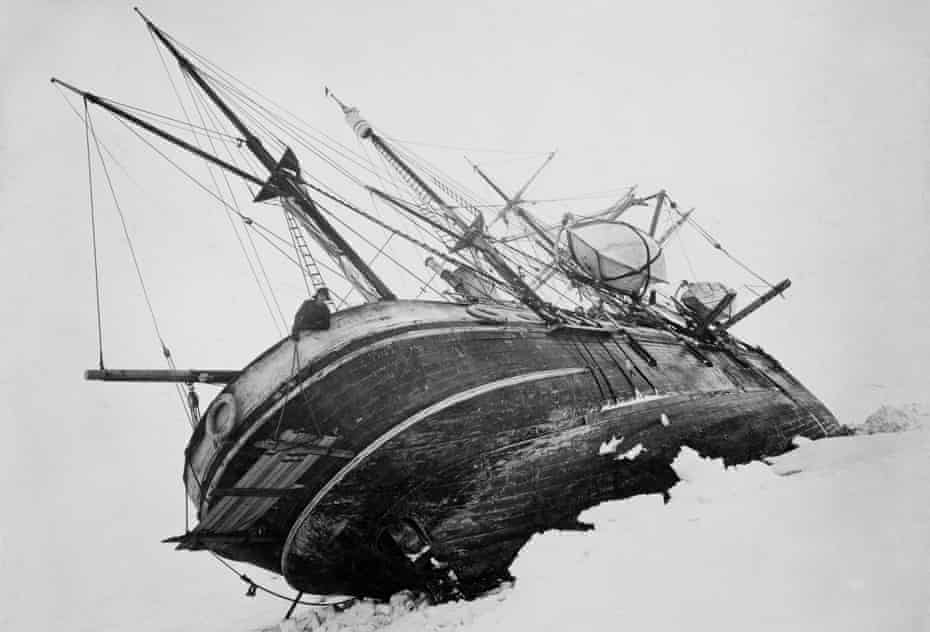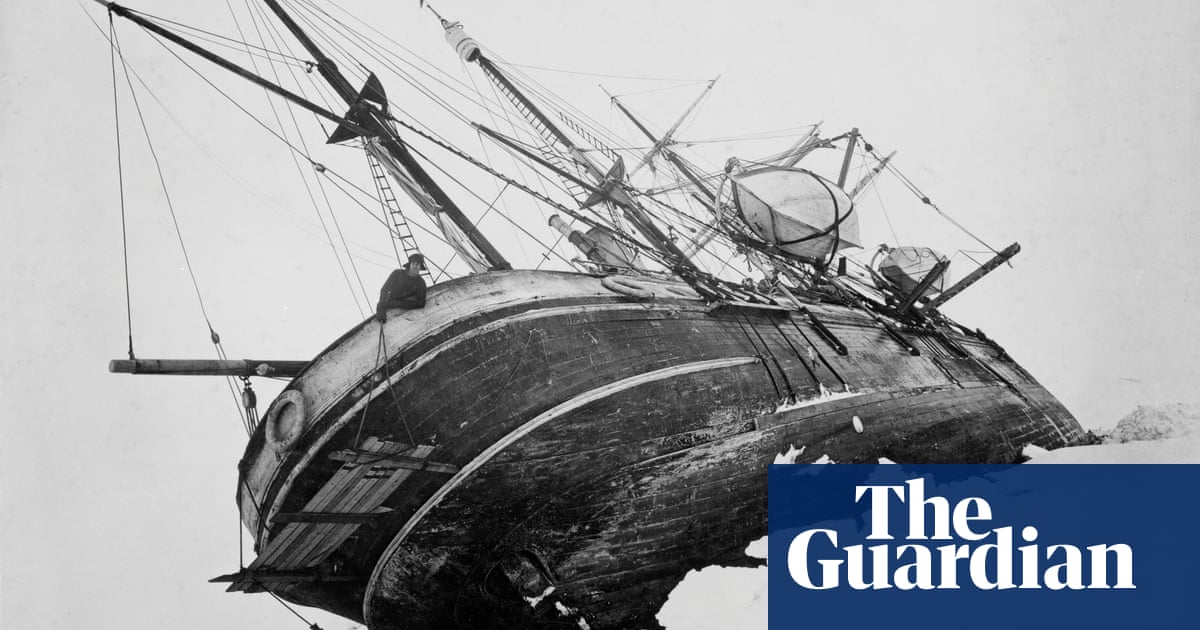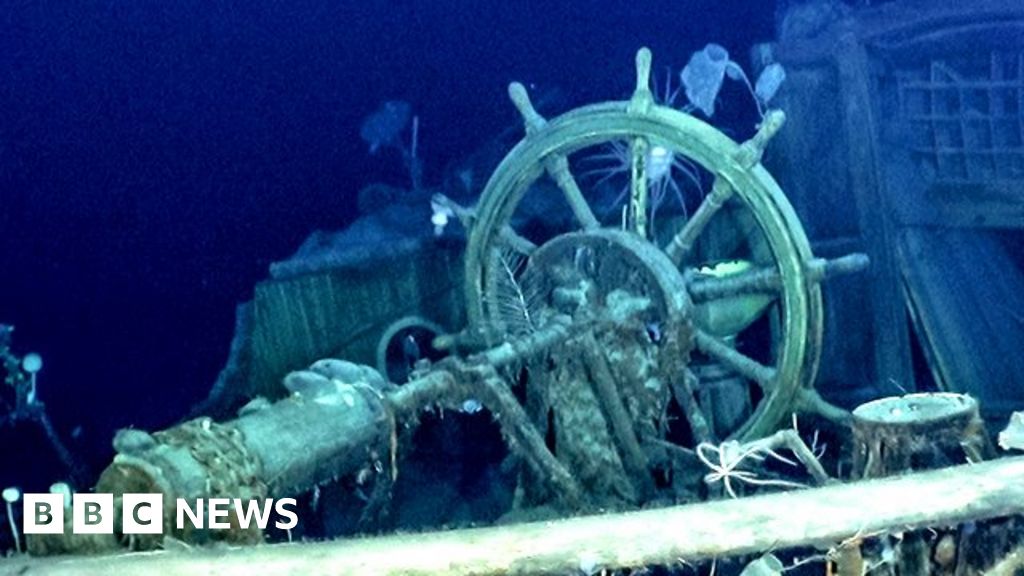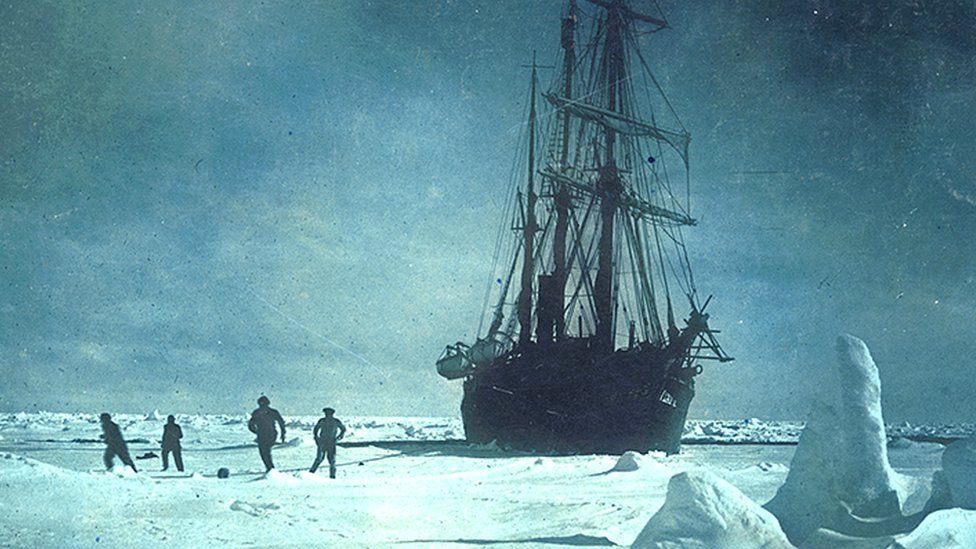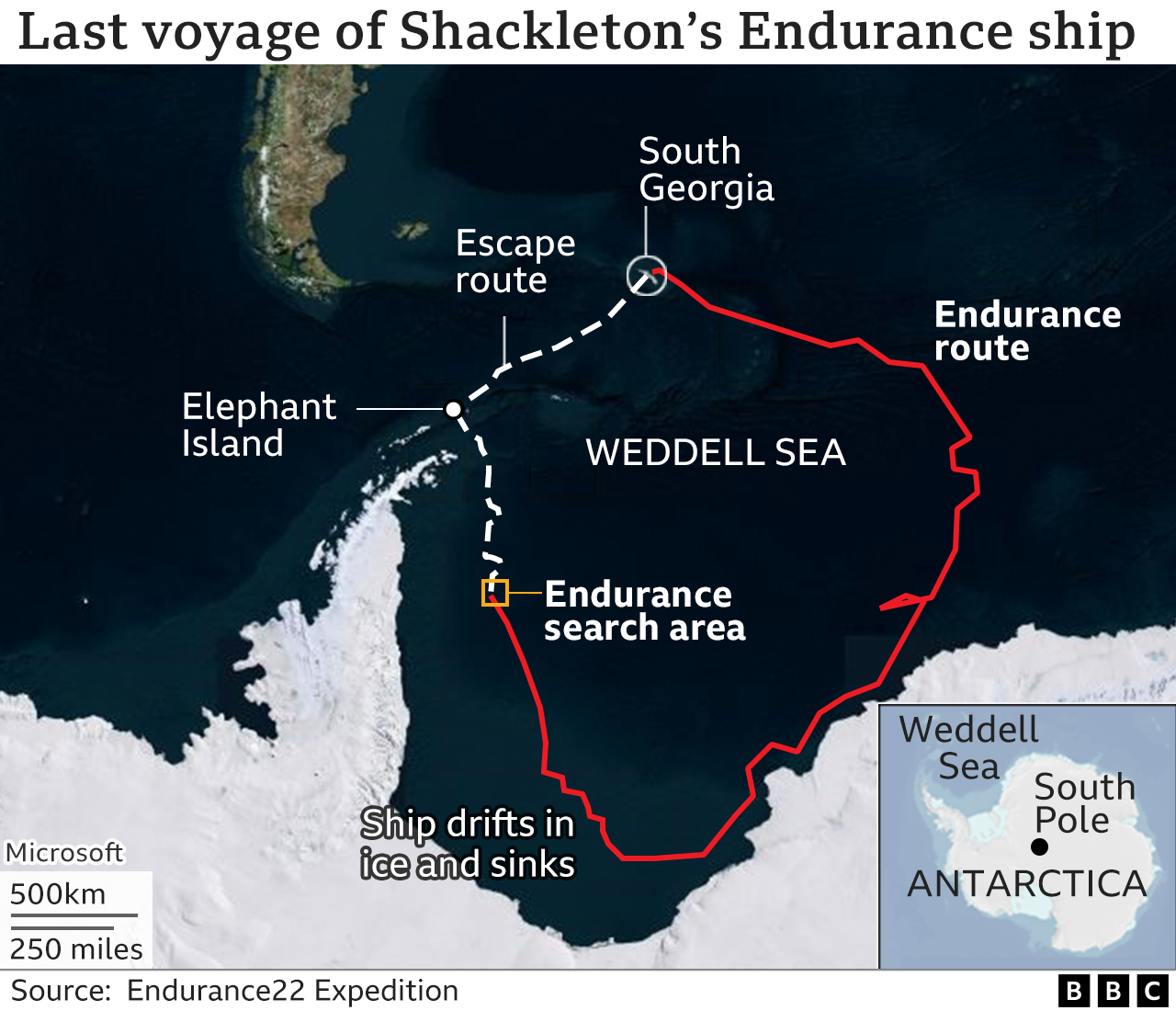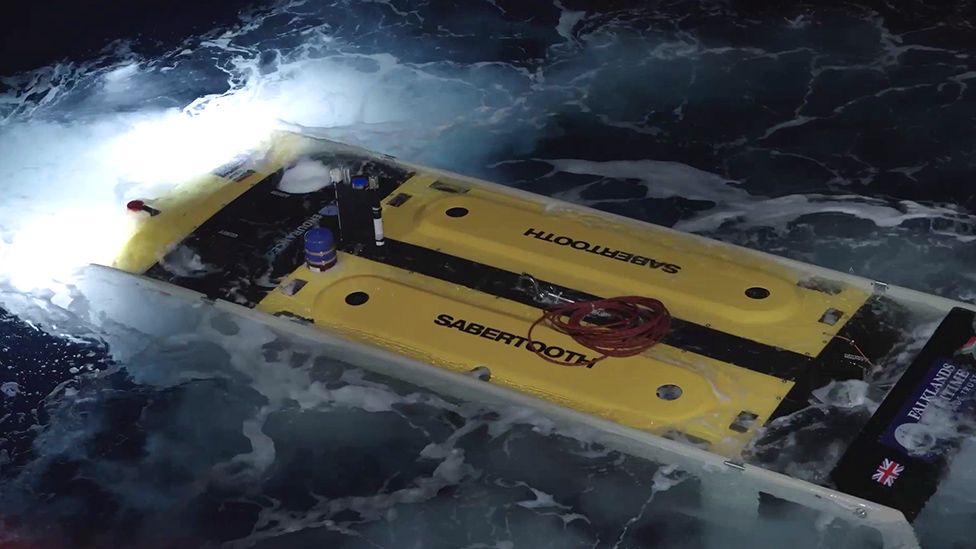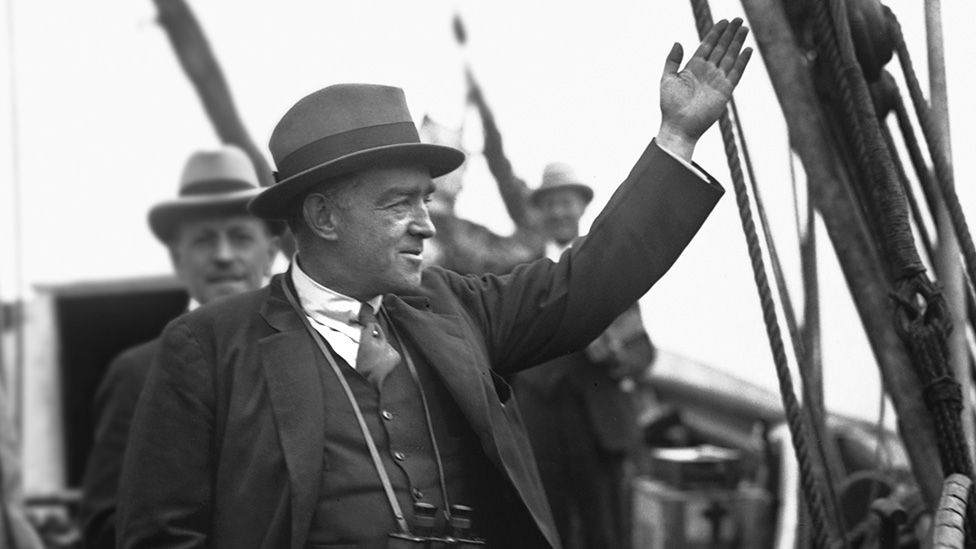Sir Ernest Shackleton’s ship Endurance found – in pictures
The wreck of the polar explorer’s ship has been discovered off the coast of Antarctica, the Falklands Maritime Heritage Trust has announced. Endurance had not been seen since it was crushed by ice and sank in the Weddell Sea in 1915. Last month, 100 years after Shackleton’s death, the Endurance22 expedition set off from South Africa to locate the vessel
Wed 9 Mar 2022 04.35 EST
Last modified on Wed 9 Mar 2022 07.33 EST
Sir Ernest Shackleton’s ship Endurance found – in pictures
(The photos are full sized at the link - WT)
The SA Agulhas II, a South African polar research and logistics vessel, breaks through ice on an expedition to find the wreck of Ernest Shackleton’s ship Endurance, undisturbed since it sank in the Weddell sea in 1915
Photograph: James Blake/Falklands Maritime Heritage Trust/PA
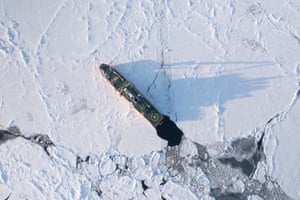
Marc de Vos (left), a senior meteorologist and oceanographer from the South African weather service, examines the weather data with fellow team members during the expedition
Photograph: Esther Horvath/Falklands Maritime Heritage Trust/PA
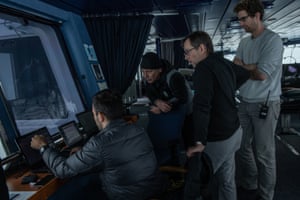
Photos, video and laser pictures of Endurance are displayed on monitors in the control room of the SA Agulhas II
Photograph: Esther Horvath/Falklands Maritime Heritage Trust/PA
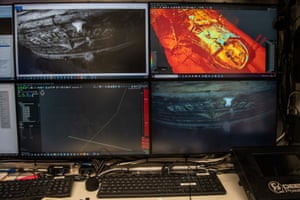
The standard bow on the wreck of Endurance
Photograph: Falklands Maritime Heritage Trust/National Geographic/PA
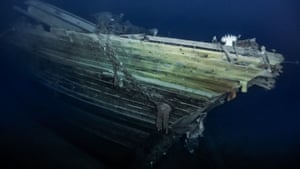
The SA Agulhas II breaks through ice as it journeys towards where it hopes to find Endurance
Photograph: Nick Birtwistle/Falklands Maritime Heritage Trust/PA
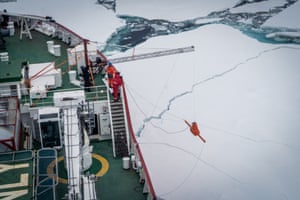
A century after Shackleton’s death, Endurance was found at a depth of 3,008 metres in the Weddell Sea, within the search area defined by the expedition team and four miles south of the position originally recorded by Endurance’s captain, Frank Worsley
Photograph: James Blake/Falklands Maritime Heritage Trust/PA
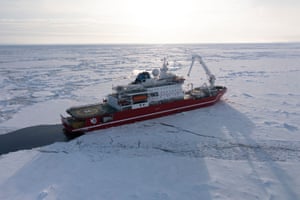
The stern of the wreck
Photograph: Falklands Maritime Heritage Trust/National Geographic/PA
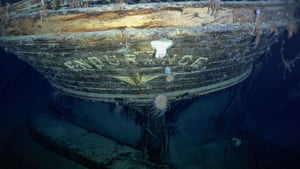
Members of the team suspended over the ice. Dr John Shears, the expedition leader, said: ‘The Endurance22 expedition has reached its goal. We have made polar history with the discovery of Endurance, and successfully completed the world’s most challenging shipwreck search’
Photograph: Nick Birtwistle/Falklands Maritime Heritage Trust/PA
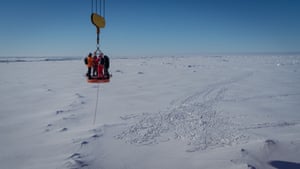
The taffrail, ship’s wheel and aft well deck of the wreck. Mensun Bound, the exploration’s director, said: ‘We are overwhelmed by our good fortune in having located and captured images of Endurance’
Photograph: Falklands Maritime Heritage Trust/National Geographic/PA

Bound, who is a marine archaeologist, said footage of Endurance showed it was intact and ‘by far the finest wooden shipwreck’ he had seen
Photograph: Nick Birtwistle/Falklands Maritime Heritage Trust/PA
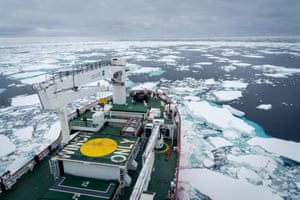
Officers and crew of the Endurance posing under the bow of the ship during the Imperial Trans-Antarctic expedition (1914-17) led by Shackleton
Photograph: Scott Polar Research Institute, University of Cambridge/Getty Images
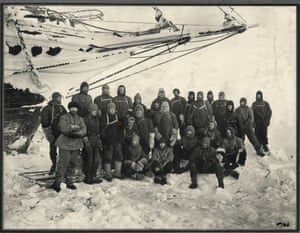
The Endurance trapped in ice in 1915 before it sank
Photograph: Bettmann Archive
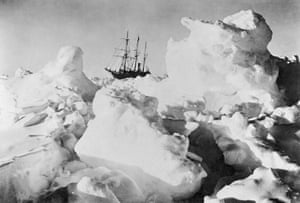
Shackleton on board Endurance in London before the fateful trip to the Antarctic
Photograph: Paul Popper/Popperfoto/Getty Images
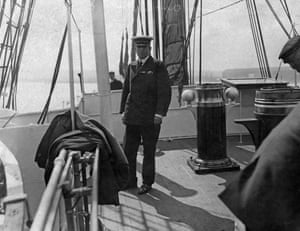
Team members (from left) Shears, Bound, Nico Vincent the expedition subsea manager, and JC Caillens, the offshore manager, proudly display the first scan of Endurance wreckage
Photograph: Esther Horvath/Falklands Maritime Heritage Trust/PA
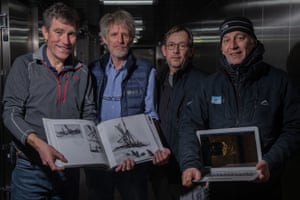
The wreck of the polar explorer’s ship has been discovered off the coast of Antarctica, the Falklands Maritime Heritage Trust has announced. Endurance had not been seen since it was crushed by ice and sank in the Weddell Sea in 1915. Last month, 100 years after Shackleton’s death, the Endurance22 expedition set off from South Africa to locate the vessel
Wed 9 Mar 2022 04.35 EST
Last modified on Wed 9 Mar 2022 07.33 EST
Sir Ernest Shackleton’s ship Endurance found – in pictures
(The photos are full sized at the link - WT)
The SA Agulhas II, a South African polar research and logistics vessel, breaks through ice on an expedition to find the wreck of Ernest Shackleton’s ship Endurance, undisturbed since it sank in the Weddell sea in 1915
Photograph: James Blake/Falklands Maritime Heritage Trust/PA

Marc de Vos (left), a senior meteorologist and oceanographer from the South African weather service, examines the weather data with fellow team members during the expedition
Photograph: Esther Horvath/Falklands Maritime Heritage Trust/PA

Photos, video and laser pictures of Endurance are displayed on monitors in the control room of the SA Agulhas II
Photograph: Esther Horvath/Falklands Maritime Heritage Trust/PA

The standard bow on the wreck of Endurance
Photograph: Falklands Maritime Heritage Trust/National Geographic/PA

The SA Agulhas II breaks through ice as it journeys towards where it hopes to find Endurance
Photograph: Nick Birtwistle/Falklands Maritime Heritage Trust/PA

A century after Shackleton’s death, Endurance was found at a depth of 3,008 metres in the Weddell Sea, within the search area defined by the expedition team and four miles south of the position originally recorded by Endurance’s captain, Frank Worsley
Photograph: James Blake/Falklands Maritime Heritage Trust/PA

The stern of the wreck
Photograph: Falklands Maritime Heritage Trust/National Geographic/PA

Members of the team suspended over the ice. Dr John Shears, the expedition leader, said: ‘The Endurance22 expedition has reached its goal. We have made polar history with the discovery of Endurance, and successfully completed the world’s most challenging shipwreck search’
Photograph: Nick Birtwistle/Falklands Maritime Heritage Trust/PA

The taffrail, ship’s wheel and aft well deck of the wreck. Mensun Bound, the exploration’s director, said: ‘We are overwhelmed by our good fortune in having located and captured images of Endurance’
Photograph: Falklands Maritime Heritage Trust/National Geographic/PA

Bound, who is a marine archaeologist, said footage of Endurance showed it was intact and ‘by far the finest wooden shipwreck’ he had seen
Photograph: Nick Birtwistle/Falklands Maritime Heritage Trust/PA

Officers and crew of the Endurance posing under the bow of the ship during the Imperial Trans-Antarctic expedition (1914-17) led by Shackleton
Photograph: Scott Polar Research Institute, University of Cambridge/Getty Images

The Endurance trapped in ice in 1915 before it sank
Photograph: Bettmann Archive

Shackleton on board Endurance in London before the fateful trip to the Antarctic
Photograph: Paul Popper/Popperfoto/Getty Images

Team members (from left) Shears, Bound, Nico Vincent the expedition subsea manager, and JC Caillens, the offshore manager, proudly display the first scan of Endurance wreckage
Photograph: Esther Horvath/Falklands Maritime Heritage Trust/PA


